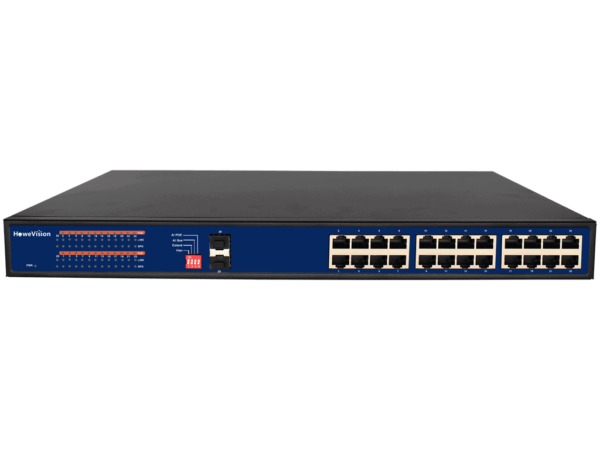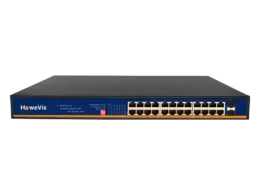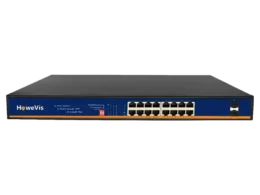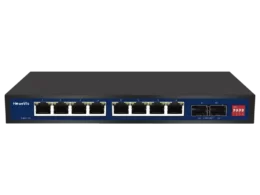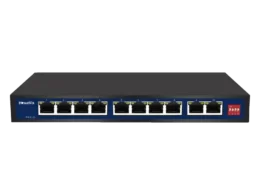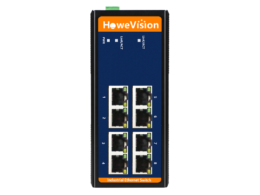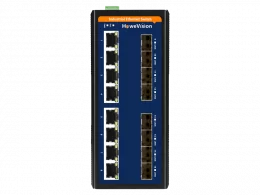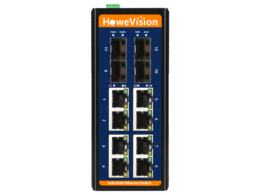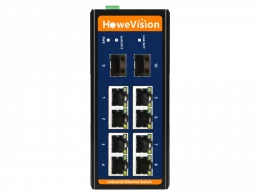Nowadays, we have different types of devices in our homes. For example, we have laptops that use high power. At the same time, we can find IP cameras providing us with a safer environment. IP cameras need low power to work. So, what if you don’t have a system to run your devices? What if you need multiple procedures to supply power to all of your devices? It consumes more energy and is highly expensive.
Why not have a solution for it? No worries, we have an answer. Power over Ethernet is available to supply all your devices, whether low power or high power. It is not all about power but also data supply. You can get high-speed data at your home with a single Ethernet cable. That’s why I say technology has made things easier to approach and find solutions.
What is Power over Ethernet?
Power over Ethernet or PoE is an advanced technology option to provide you with a power supply of up to 95 watts with IEEE 802.3bt standard. If you need data speed up to 1 gigabyte per second, PoE can do this as well. More secure and effective for making all the best features possible over a single Ethernet port.
If you want to clear concepts regarding PoE, you can check the article— What is PoE?
What is a PoE hub?
Do you know what exactly Hub means? Maybe not. Moreover, it can be difficult for you to understand unless I make it easier for you. Usually, the Hub refers to the center of the activity of something. By that means, all the power comes from the Hub. I hope it is now quite simple to define the PoE hub for you. However, let me interpret it in simple words.
In this case, the PoE hub is a hardware device that connects all your PoE devices over a single connection and lets them work as a single network segment. There are multiple input and output ports in the PoE hub. A single input signal will appear at all the output ports except for the original device from which the signal is coming.
How do PoE hubs work?
Let me clarify: PoE hubs are now obsolete because we have Power over Ethernet switches to connect the devices.
If you want to learn about the ultimate difference between the PoE hubs and switches, read our guide—What Is the Difference Between Ethernet Hub and Ethernet Switch?
Power over the Ethernet hub is just like the PoE switch, which acts as a center and supplies power to the power devices.
- Power over the Ethernet hub makes a connection through the Ethernet port to all power devices.
- It receives the signals from the power source and converts them into electrical signals.
- Then, it transfers those signals to all the devices in the form of a power supply.
A hub can contain multiple ports ranging from 4 to 24 ports for connecting various devices like computers. It acts as a network for all those devices and makes them a single network segment.
What are the different types of PoE hubs?
Do you know the types of PoE hubs? Based on the working mechanism, we can differentiate PoE hubs and categorize them into three main types.
Active Hub:
As the name indicates, it is the Hub that does the work actively. Active Hub amplifies the given signals from the power source and transmits them to the power devices. By that means, it can regenerate the information signals and make them more effective for the devices. As I already stated, it works actively to clean, boost, and upgrade the properties of the signals from the source devices. Therefore, you can call it a multiport repeater as well.
Passive Hub:
The passive Hub doesn’t work as an active hub. You can consider it like a simple bridge that can receive the input signals from the power source and transfer it to the power device. It’s so simple. It just forwards the signals.
Intelligent Hub:
What do you think about the intelligent Hub? Is it brilliant enough? I suppose it is. Since the intellectual Hub works as both an active and passive hub, it can serve as a router and bridge for the given signals. It can boost the given signals, increase the speed of the work, and act as a bridge to transfer them to the power device.
What are the advantages of PoE hubs?
There are numerous advantages of the PoE hub that make it unique in its features. Let’s look at the benefits of the PoE hub.
High performance:
Usually, network performance decreases with the number of connections. In the case of the Hub, it is less likely to affect the performance of the network. You know, why? Because it utilizes broadcast models that rarely affect the network speed.
Extends coverage Area:
Network coverage has some limits when it comes to distance. For example, power over Ethernet provides data within 100 meters. The use of a PoE hub can increase the coverage distance.
Multiple Media Support:
A hub can support multiple types of media at the same time. Even if there are different requirements for each device, it can work perfectly. Quite awesome!
Inexpensive:
Compared to power over Ethernet switches, PoE hubs are inexpensive. They consume less power and save money for the users.
What are the disadvantages of the PoE hub?
It would help if you did not only focus on the benefits. Instead, look at the drawbacks and make informed decisions whether to choose the Hub or not.
Half-Duplex Mode:
There is a difference between the full-duplex and half-duplex modes. Hub supports only half-duplex mode and lacks full-duplex options. It means it can transfer data only in one direction at one time. You have to switch modes daily; that is tiresome work.
Bandwidth Wastage:
A hub doesn’t support dedicated bandwidth. It can cause bandwidth wastage. Only two devices can occupy the whole bandwidth leading to slow network speed for other devices. It sucks!
Network Traffic:
PoE hub lacks features for reducing network traffic. Even for highly busy networks, it generates a high amount of traffic— an actual problem.
Collision Domain:
PoE hub increases the chances for collision between multiple domains. It lacks this feature to operate numerous parts at the central network.
What are the applications of the PoE hub?
You can find the PoE hubs in the following areas.
- You can use it to monitor the networks by inserting the protocol analyzer
- Create small home networks for integrating multiple devices.
- Organizations and computer labs are used for connectivity.
- A 10BASE-T port and an AUI port hub can help you connect the 10BASE5 segment to a modern network.
